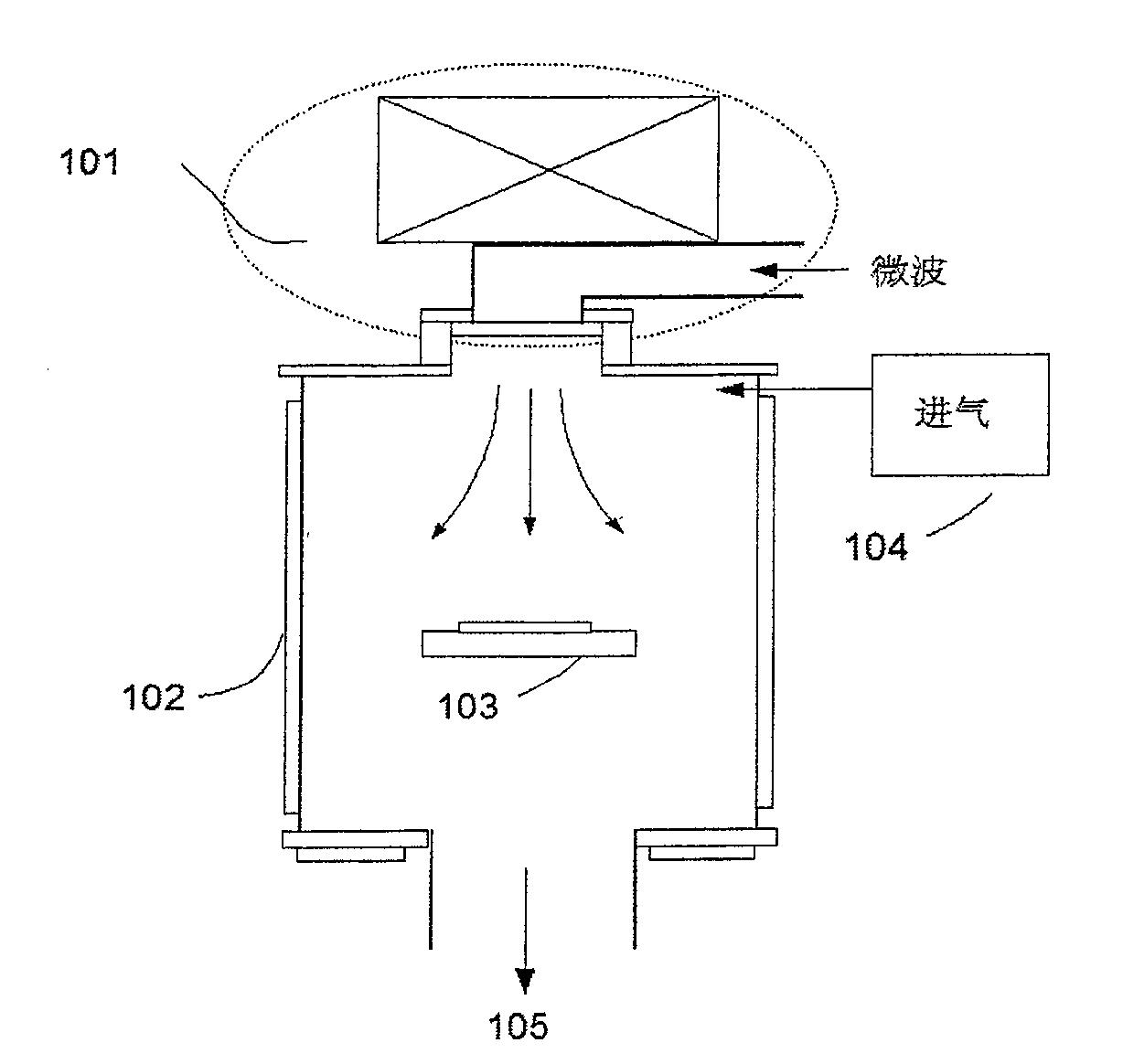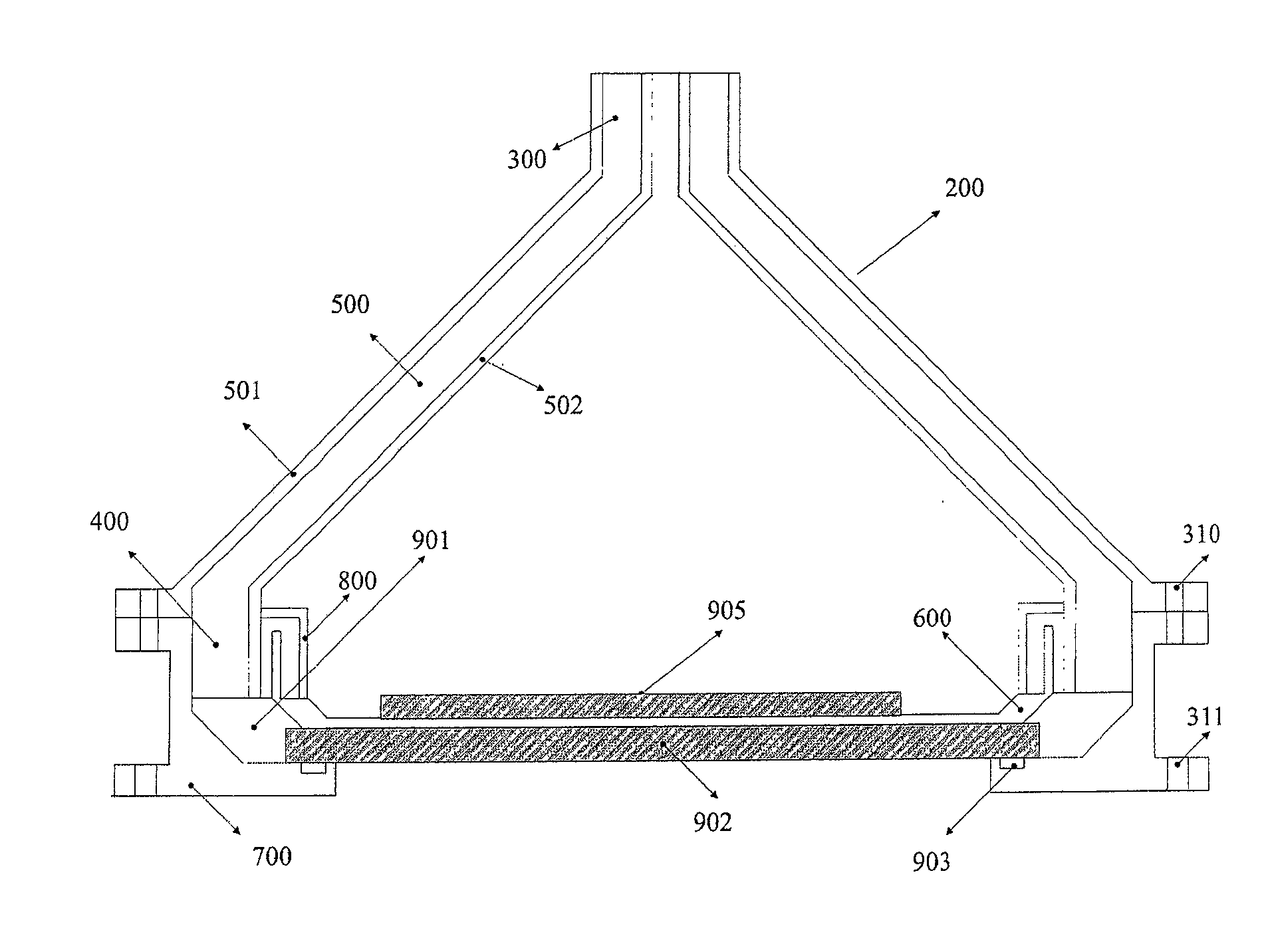Microwave resonance cavity
A microwave resonant cavity and integrated technology, which is applied in the direction of resonators, waveguide devices, electrical components, etc., can solve the problems of unsatisfactory plasma uniformity, poor plasma uniformity, inconvenient disassembly and maintenance, etc., and achieve the improvement of large-area processing capacity , prevent microwave leakage, easy maintenance effect
- Summary
- Abstract
- Description
- Claims
- Application Information
AI Technical Summary
Problems solved by technology
Method used
Image
Examples
Embodiment Construction
[0021] figure 2 A schematic diagram of the microwave power source and transmission system is given. The microwave power source and transmission system consists of a microwave generator 201, a circulator 202, a water load 203, a power meter 204, a directional coupler 205, a pin adapter 206, a short-circuit piston 207, a rectangular waveguide 208, and a rectangular-to-coaxial waveguide conversion device 209 and microwave resonator coaxial waveguide 200. The connection relationship of each part is: from left to right, the rectangular waveguide 208 is respectively connected with the microwave generator 201, the circulator 202, the directional coupler 205, the pin matching device 206, the rectangular-coaxial waveguide converter 209, and the short-circuit piston 207 connection; the reflection end of the circulator 202 is connected to the water load 203; the power meter 204 is connected to the directional coupler 205; the rectangular-coaxial waveguide converter 209 is connected to ...
PUM
 Login to View More
Login to View More Abstract
Description
Claims
Application Information
 Login to View More
Login to View More - R&D
- Intellectual Property
- Life Sciences
- Materials
- Tech Scout
- Unparalleled Data Quality
- Higher Quality Content
- 60% Fewer Hallucinations
Browse by: Latest US Patents, China's latest patents, Technical Efficacy Thesaurus, Application Domain, Technology Topic, Popular Technical Reports.
© 2025 PatSnap. All rights reserved.Legal|Privacy policy|Modern Slavery Act Transparency Statement|Sitemap|About US| Contact US: help@patsnap.com



